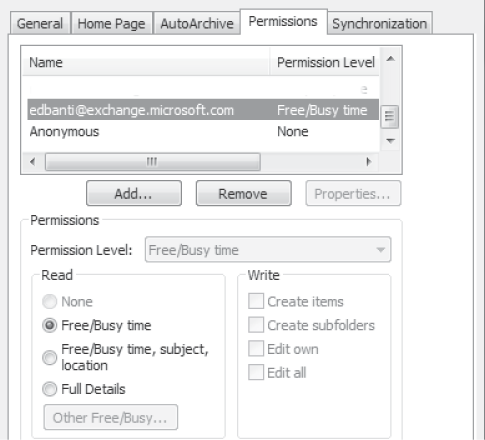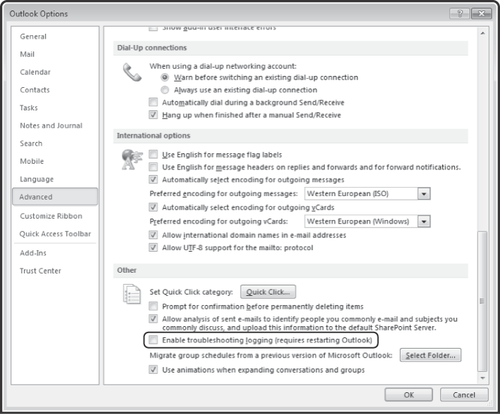3. Troubleshooting Calendar and Contacts Sharing
Although Calendar and Contacts do not use organization relationships, they do depend on having valid federation trusts in place in both organizations for two-way sharing. Therefore, you will find the troubleshooting cmdlets and procedures outlined in the Section 1 section of this article useful. In addition, the Get-FederationInformation
cmdlet will help you determine whether the external organization your
users are attempting to share with has a valid federation trust in
place.
Another aspect to
consider for troubleshooting Calendar and Contacts sharing is the
permissions set on the user's Calendar or Contacts folder. Calendar and
Contacts sharing is a one-to-one relationship between two users in
different organizations, so the user's Calendar or Contacts folder
should have a permissions entry for the external user the folder is
being shared with, as shown in Figure 4.

Finally, if you use Outlook 2010 for free/busy access or Calendar and Contacts sharing,
you can enable client logging within Outlook. This is done by clicking
File, then Options, then Advanced, and then Enable Troubleshooting Logging (Requires Restarting Outlook) as shown in Figure 5.

Outlook 2010 then writes logs into the logging directories. For free/busy logs, they are located at %temp%\olkas; look for files named *.fb.log. For Calendar and Contacts sharing logs, they are located at %temp%\outlook logging; look for files named *-rs.log, *-es.log, and *-ps.log. Depending on the issue or failure encountered, the *-ps.log file may or may not be created.